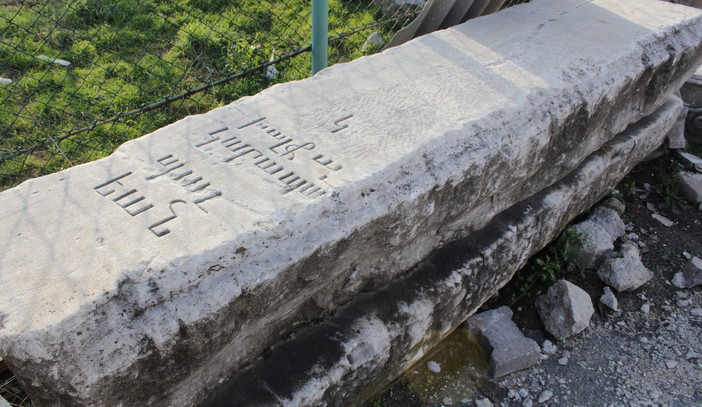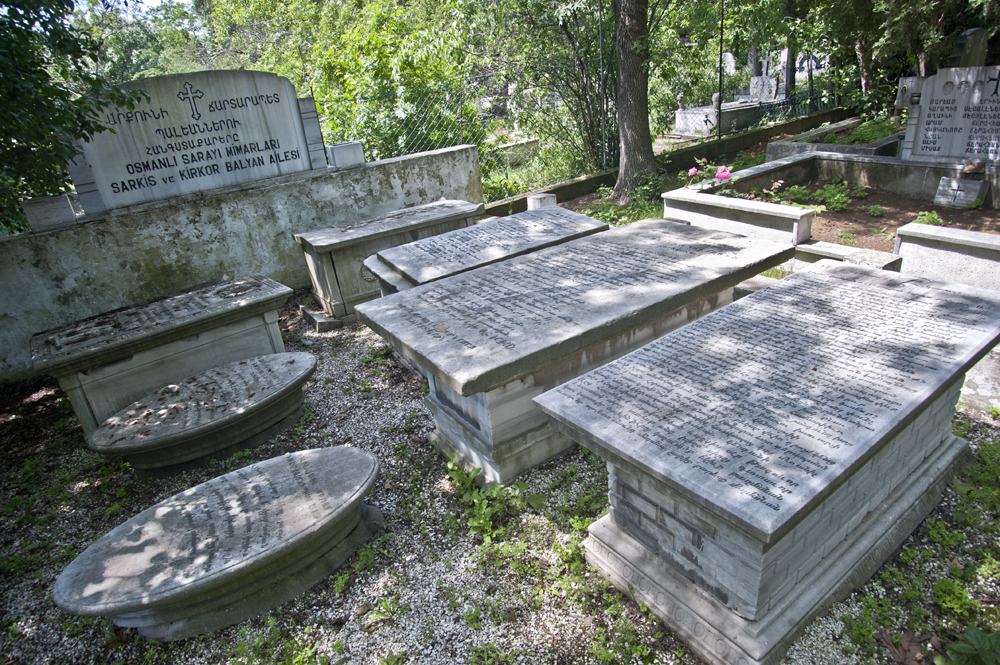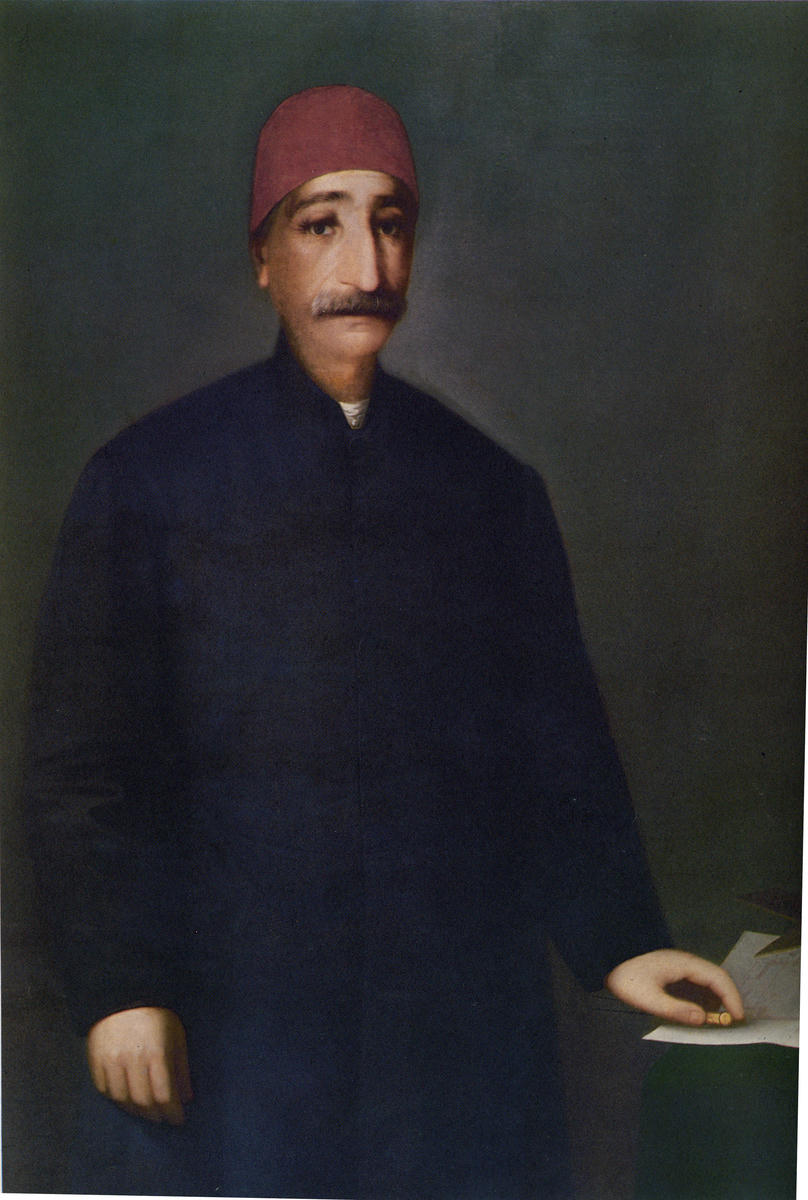‘İşin ehli’ Balyan'a büyük saygısızlık


İstanbul’un simge yapılardan biri olan Dolmabahçe Sarayı’nın mimarı Garabet Balyan’ın kayıp olan mezar taşı, İstanbul Büyükşehir Belediyesi’nin Kartal’da kullandığı bir şantiyede ortaya çıktı.
Bilindiği gibi, İstanbul’daki pek çok önemli yapı, Balyan Ailesi’ne mensup mimarların eseri. Dolmabahçe Sarayı, Gümüşsuyu Askeri Hastanesi, Dolmabahçe Valide Sultan Cami gibi İstanbul’daki tarihi öneme sahip yapıların mimarı Garabet Balyan’ın kayıp olan mezar taşı, Kartal Soğanlık’ta, İstanbul Büyükşehir Belediyesi (İBB) tarafından kullanılan bir şantiyenin içinde bulundu. İBB’nin uzun yıllardır kullandığı şantiye alanındaki binalarının yıkılmasıyla, binaların arasında kalmış mezar taşı ortaya çıktı. Balyan’ın mezar taşının yanı sıra, üzerindeki Ermenice yazılar tam olarak okunamayan başka mezar taşları ve kitabeleri de bulundu.
Beşiktaş Ermeni Mezarlığı’ndaydı
Garabet Balyan’ın mezarının nerede olduğu bilinmiyor. Bu konuda elimizdeki en önemli kaynaklardan biri, Pars Tuğlacı’nın ‘Balyan Ailesi’ kitabı. Tuğlacı, kitabında, Garabet Balyan’ın mezar taşına ait bir fotoğrafa da yer vermişti. Berç Erzian tarafından 1958’de Beşiktaş Ermeni Mezarlığı’nda çekilmiş fotoğrafları yayımlayan Tuğlacı, mezar taşlarının artık yerlerinde olmadığını anlatıyordu. Fotoğraftaki Garabet Balyan’a ait mezar taşıyla, belediye şantiyesine bulunan mezar taşının aynı olduğu tespit edildi.
Sorular yanıtsız
Yıllardır kayıp olan Balyan’ın mezar taşının İstanbul Büyükşehir Belediyesi’nin kullandığı şantiye alanına nasıl geldiği ve mezar taşlarını korumaya yönelik tedbirlerin neden alınmadığı soruları ise hâlâ yanıtsız. Ulaştığımız Büyükşehir Belediyesi yetkilileri, konunun araştırılacağını söyleyerek, sorularımızı yanıtsız bıraktı.
 Fotoğraf: Berge Arabian
Fotoğraf: Berge Arabian Mezarlık tarumar edildi
Beşiktaş Ermeni Mezarlığı, Ermenilere ait gasp edilmiş en önemli taşınmazlar arasında gösteriliyor. Hrant Dink Vakfı’nın, 2012 Beyannamesi: İstanbul Ermeni Vakıflarının El Konulan Mülkleri başlıklı proje çalışmasında, mezarlığın hikâyesi de yer alıyor. Buna göre, Beşiktaş ilçesinde iki mezarlık bulunuyordu. Mezarlıklardan birinin bugünkü yeri, Abbasağa Parkı. Mezarlığın arazisi, 1776’da Güreğ Manuelyan tarafından satın alındı. 1849’da, Garabet Amira Balyan tarafından çevresi duvarla çevrildi. Ermeni Patriği Harutyun Vehabedyan, araziye el koymak isteyen II. Abdülhamid’e, 4 Mart 1887’de dilekçe yazarak, istimlakı durdurdu. Padişah, mezarlığın Ermeni cemaatinin elinde kalmasına ve mevcut mezarların korunmasına, ama duvarların yıkılarak arazinin bahçe hâline getirilmesine karar verdi. 1930’lara kadar metruk kalan mezarlık arazisi, 1939’da İstanbul Valisi Lütfi Kırdar’ın kararı doğrultusunda istimlak edilerek Abbasağa Parkı hâline getirildi. İlçedeki diğer mezarlık da Boğaziçi Köprüsü’ne bağlanan Yıldız kavşağının olduğu yerdeydi ve Barbaros Bulvarı yapılırken kamulaştırılarak yok edildi.
Garabet Balyan: İstanbul’u İstanbul yapan mimar
 Garabed Balyan. Portre: Abraham Sakayan
Garabed Balyan. Portre: Abraham Sakayan Mimarlık tarihine adı Dolmabahçe Sarayı’nın mimarı olarak geçen Garabet Amira Balyan’ın gençliği ve eğitimi hakkında pek bilgi yoktur. 1831’de babası Krikor Balyan’ın ölümü üzerine, eniştesi Ohannes Amira Serveryan’la birlikte Darphane Müdürü Kazaz Artin Bezciyan’ın aracılığıyla hassa mimarı, yani saray mimarı oldu.
İlk çalışması Yedikule’deki Surp Pırgiç Ermeni Hastanesi’nin yapımıdır. Ermeni toplumuna, yalnız mimar olarak değil, yaptığı bağışlarla ve özellikle eğitim alanındaki çalışmalarıyla büyük hizmetlerde bulunmuştur. Nazeni Babayan’la evliliğinden on çocuğu olmuştur. Çocuklarından Nigoğos, Sarkis, Agop ve Simon da hassa mimarı olarak görev yapmışlardır.
Garabet Balyan, ailenin mimar olarak gösterdiği faaliyetlerin sürekliliğinde kilit rol oynamıştır. Sultan II. Mahmut, Abdülmecit ve Abdülaziz’in hükümdarlık yıllarında mimarlık yapmış, İstanbul’un mimari mirasının önde gelen anıtlarının yapımı üstlenmiştir. Yaklaşık 30 yıl süren meslek yaşamının en verimli dönemi, Abdülmecid’in saltanat yıllarına denk düşer.
Garabet Balyan’ın eserlerinin bir çoğu sağlam, ayakta ve özgün durumlarını korumaktadır. Bütün eserleri 1. derece kültür varlığı olarak tescillenmiştir.
Garabet Balyan’ın görkemli yapı listesi
Dolmabahçe Sarayı ve Camisi, Mimar Sinan Güzel Sanatlar Üniversitesi, Kuleli Süvari Kışlası, Terkos tesisleri, Bahçeköy’deki Kirazlı Bent ve Bend-i Cedid, Beykoz Deri Fabrikası, Bakırköy Bez Fabrikası, Hereke Fabrikası, Yedikule Surp Pırgiç Ermeni Hastanesi, Beşiktaş’taki Surp Asdvadzadzin Kilisesi, Kuruçeşme’deki Surp Haç Kilisesi, Beyoğlu’ndaki Surp Yerortutyun Üç Horan Kilisesi.


